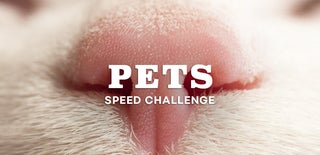Introduction: A Pet for Every Collar, a Collar for Every Pet!
My girlfriend and I have got four cats: red, black, european cats.
We love them, and we know how much painful it can be to lose them, to stay asleep at night hoping hearing them in the living room, back from a few days vacancy.
We tried GPS collars and bluetooth colalrs: they work just fine as long as your pet is around, but they are not as good as simple collars with name and phone number!
We developed four different collars, made with 3D printing in common materials like PLA, PET-G and TPU: choose the one you prefer and edit on Onshape, or copy and made one by your self!
Step 1: Collar 4: Pikipiki
Our lovely cat has long hair so it is better to use a flea and tick prevention collar just like Seresto's one.
This collar can 3D printed in PLA or in PET-G, materials with enough stiffness in order to insert prevention collar inside. Hollow text is less then 1mm deep. You won't need any support during 3D print if your blowing fans are good enough, any printing imperfection will stay inside and you won't see it!
Step 2: Collar 3: Papaya
Ok, you read "Romeo" but our cat is Papaya...so what? simply rendered the wrong file in Solidworks!
Well, if your pet has a common collar, usually a fabric one you maybe made by yourself with canvas or cloth or leather, this is the right collar because you only need to insert it through the holes, without trimming anything. Current bending is enough for an adult cat or for small dogs.
And yes, Papaya is a grumpy cat!
Step 3: Collar 2: Penelope
Our lovely female cat wears a different type of collar, this one is adjustable in order to wait Penelope to grow slowly as it takes (Penelope has some endocrine growth problems, she is growing really slowly).
This collar is made of two parts because my printer bed is not big enough: since it is only 230mm I designed the collar so that you will join two parts.
You need to 3D print this collar in soft and elastic material like TPU or TPE: this can be difficult depending on your 3D printer, bowden types usually are not so good in 3D printing flexible materials: you can find useful information on simplify3d's web site.
When printing is over simply join the two parts, probably you will need to push a bit to fit the holes, this is normal and useful in order to avoid disjoings.
Step 4: Collar 1: Umeme
The last one, the safest one: previous collar can be very dangerous if your pet, expecially cats, sometimes get in troubles with entangled collars in tree branches: yes, cats shouldn't climb trees, this can be really dangerous...but they are cats and they climb trees sometimes.
The best would be the collar to open by itself, avoid risks of dying asphyxiated.
Well, this collar is what your cat needs!
It is a little bit more complex, but but it worths the time you will spend on.
You will need 6 small magnets, cilindrical, 3mm diameter by 3mm height, you can buy on MTSmagnete, supermagnete, magfine or wherever you like: attraction force should be 0.3 kilos for each one.
Then 3D print in TPU or PET-G and insert magnets with some epoxy glue to stick in their seat.
The best to optimize attraction is to set in this order: North - South - North, and South - North - South on the opposite side, you can deepen knowledge looking for Halbach array.
Step 5: Done! Every Pet Has Is Own Specific Collar!
I share also my Solidworks files: I know it can be tricky to open a closed source file, but if you are lucky and use Solidworks for your everyday jobs then you can easily modify and adapt these collars to your needs!

Participated in the
Pets Speed Challenge

















